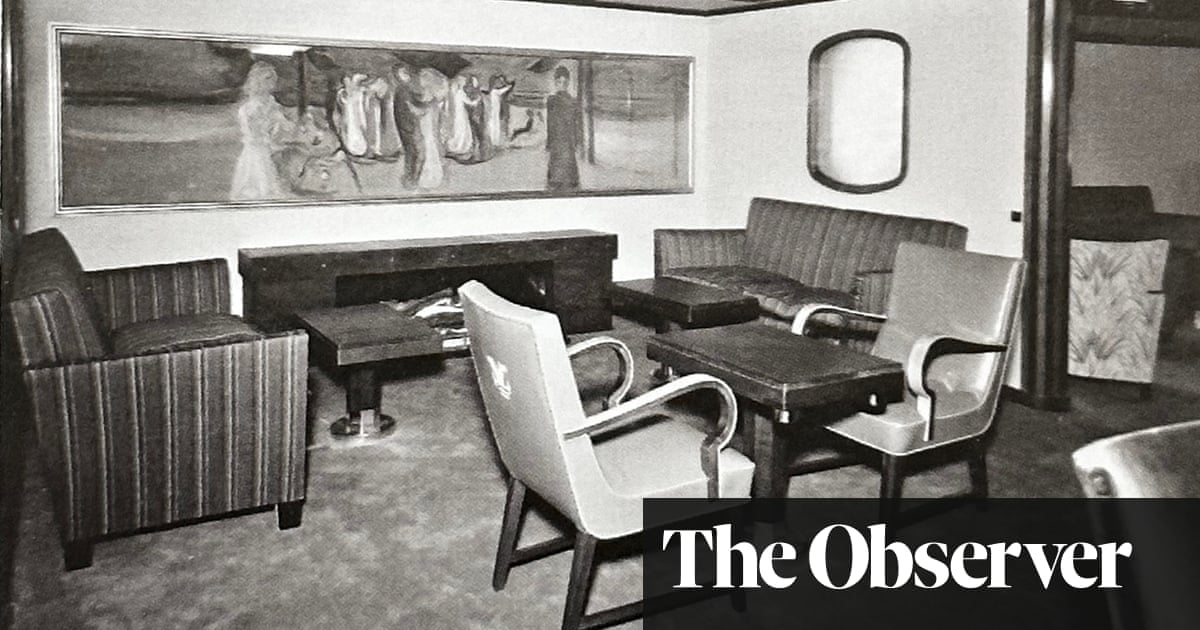
When neo-Nazi terrorist Callum Parslow walked into a countryside hotel on 2 April and stabbed an asylum seeker in the chest, it was not the first time he had come to the attention of the police.
The 31-year-old computer programmer was on bail, having been arrested four months earlier for sending racist and sexual messages to a black female journalist. The mindset that drove his attack was clear.
When police searched Parslow’s home in Worcester on 13 December, they found a stockpile of Nazi memorabilia, including rings and medallions from the Third Reich, two copies of Adolf Hitler’s Mein Kampf and numerous other far-right books.
The items were scattered through his bedroom, which had a huge St George’s flag on the wall, 10 cans of cider on the desk and empty crisp packets and milk cartons on the floor.
His laptop and phone contained further indication of his beliefs: countless videos, images and texts linked to neo-Nazi ideology, alongside evidence of his immersion in conspiracy theories ranging from white genocide to “exaggerated pandemics”.
But Parslow remained free, and would tell his eventual trial, which concluded on Friday after three weeks, that his December 2023 arrest was the moment he started considering launching an attack.
Last week, Parslow was found guilty of attempted murder and will be sentenced at a later date. Reporting restrictions have now been lifted and we are able to tell the full story of Parslow’s crime for the first time.
Parslow claimed his plans for an attack were accelerated by an eviction notice he was handed in February – which he was given for posting what prosecutors called an “extremely racist” note in his shared flat.
“I was on bail and I [thought I] was going to prison, and I was going to get evicted, so I knew I was going to attack someone,” Parslow told Leicester crown court.
“It was only after the eviction notice that I thought ‘fuck it, I’m going to do something’. I knew it would be going to attack a migrant at a hotel.”
Shortly after his arrest in December, Parslow started writing a terrorist manifesto on the Notes app on his phone. Intended for release after his attack, it read: “My name is Callum Parslow and I just did my duty to England. They will call me a terrorist, they will call me an extremist: I am neither. I am but a gardener tending to the great garden of England. I removed the weeds; I exterminated the harmful, invasive species.”
The document railed against Jewish people, Marxists and “globalists” – blaming them for everything from migration to falling living standards – as well as “queer indoctrination”, and “[the] demonising [of] masculinity, meat consumption, Christianity, white people and all European culture”.
The lengthy tirade ended with Parslow voicing hope that his attack would be the “snowflake that started the avalanche”, before issuing a call to arms to “fellow Englishmen” and urging them to “become warriors … become Albion’s vengeance”.
While the document remained secret, Parslow had made no effort to conceal his ideology – quite the opposite. He had Hitler’s signature prominently tattooed on his forearm, chose the X handle “cyberpunk Nazi”, and used an email address calling himself “Lord Adolf reborn”.
After his first X account was taken down in February, Parslow set up a new one and paid for a blue tick that saw his racist posts promoted.
As the weeks counted down to his attack, he glorified Hitler, posted a selfie performing a Nazi salute and called Jews and non-whites “animals”, while occasionally tagging the Home Office and Metropolitan police.
Two days before he launched his attack, a user on X who had reported Parslow’s posts received an official response from the social network saying his account had “not broken our safety policies”, which include praising violence or wishing harm on people.
During the same period, Parslow had been making preparations. In December, he paid $1,000 (£770) for a handcrafted knife from America, and days after it arrived he made online searches including “worst places to get stabbed”, the location of key arteries, and “are neck wounds always lethal?”.
Parslow then started researching previous far-right terror attacks in the UK, including the 2016 murder of Labour MP Jo Cox by a neo-Nazi and the 2017 Finsbury Park van attack targeting Muslims.
He had downloaded the manifesto of white supremacist terrorist Brenton Tarrant, who massacred Muslim worshippers in New Zealand mosques in 2019, and that of 2011 Norway mass shooter Anders Breivik.
Parslow quit his job as a computer programmer for a local metals manufacturer in mid-February, and took out a £10,000 loan and new credit cards to fund a six-week pilgrimage around the UK.
He travelled to dozens of towns and cities that he felt had links to white British culture, visiting cathedrals and historical monuments then returned to Worcester days before his planned eviction on 3 April.
He planned to launch his attack on 2 April, and already had a target in mind. Parslow had become fixated on small boat crossings in the English Channel, believing they were part of a Jewish-led agenda to “replace” white people in the UK.
He was following numerous far-right influencers on social media, who were publicising the locations of hotels used by the Home Office to house asylum seekers.
One such hotel was the Pear Tree Inn, in a rural setting seven miles from Parslow’s flat. Asked why he had chosen it as the target, Parslow told jurors he heard about it through “multiple avenues”, including a “map on Twitter” and a video posted online by an anti-migrant activist.
What Parslow did not know is that by the time he travelled to the hotel on 2 April, it had been released from its Home Office contract and all asylum seekers had been moved elsewhere.
Emanuel Popa, the hotel manager, described how staff were redecorating and welcoming a small number of guests as a “soft reopening” on the day. By chance, one former resident had returned to the Pear Tree Inn to borrow a bicycle from Popa, with whom he had struck up a friendship.
Nahom Hagos, a 25-year-old asylum seeker from Eritrea, had left the hotel in January after a year there, and his own bike had been stolen.
Hagos was eating lunch on his own in the hotel’s conservatory when, shortly before 1.30pm, Parslow walked in. He had concealed his knife in a pocket, and Hagos initially had no idea he was at risk. “He asked me where the toilets were and I showed him,” he told the court. “He asked me where I was from … I said ‘I’m from Eritrea’.”
Thinking nothing of the brief exchange, Hagos sat down to resume eating, but a minute later Parslow returned. He immediately pulled out the knife and stabbed Hagos in the chest and hand, pushing a table towards him and running away.
“He was trying to kill me, I was calling out,” Hagos said. “I don’t know why he punished me like this, I don’t know if the Lord was giving me another life.”
Hagos fled into the hotel’s car park, bleeding profusely and shouting “why brother why, why did you do this?”, as Parslow followed him at a steady walking pace.
His screams alerted Popa, who managed to lock the hotel’s front door and tried to shield Hagos in a bathroom. CCTV showed Parslow trying to open the door before walking around the hotel in an apparent search for other asylum seekers.
Just six minutes after his arrival, Parslow left, walking calmly back across the car park and disappearing.
As he made his way along a canal tow path, Parslow was in the process of trying to post his terrorist manifesto on X.
Also tagged in the unsent post were Tommy Robinson, Keir Starmer, Rishi Sunak, Boris Johnson, Suella Braverman, Lee Anderson and Nigel Farage.
Parslow, now 32, denied attempted murder and claimed he only intended to wound his victim as a ploy to be imprisoned before he was evicted.
He separately admitted two unconnected offences of sending grossly offensive Instagram and Facebook messages to a black female journalist and “cyber flashing” the same woman during summer 2023. The case caused reporting restrictions to be placed on his terror trial, because Parslow originally denied the offences and was due to go on trial next month.
Throughout his case, Parslow defended his beliefs, at points appearing to be trying to convince the jury of supposed evidence behind a vast array of conspiracy theories.
Parslow said he “spent a lot of time on the internet”, while working night shifts and having no social life. “I would get angry seeing a lot of the articles that were online,” he said. “It just makes you angry.”
West Mercia police said “bail conditions were in place which were appropriate for the nature of the offences.”. West Midlands police were contacted for comment.












